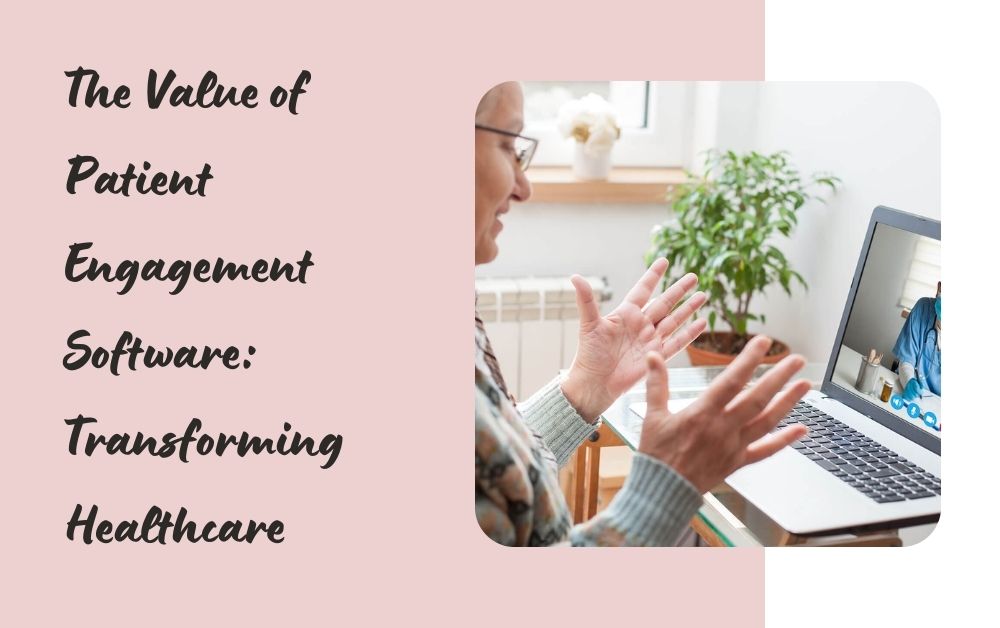Embracing Innovation in Healthcare
Technology continues to transform various industries, and healthcare is no exception. Patient engagement software stands at the forefront of this transformation, revolutionizing the way patients interact with healthcare providers and empowering individuals to take control of their health like never before.
Understanding Patient Engagement Software
Patient engagement software refers to a set of tools and platforms designed to facilitate communication and interaction between patients and healthcare providers. These solutions aim to enhance patient involvement in their healthcare journey, improve access to medical information, streamline administrative processes, and ultimately, foster better health outcomes.
The Need for Improved Patient Engagement
In traditional healthcare settings, patient engagement has often been limited to periodic visits to the doctor’s office or hospital. However, this approach fails to capitalize on the potential for continuous communication and collaboration between patients and healthcare providers. As a result, patients may feel disconnected from their care, leading to lower adherence to treatment plans, increased healthcare costs, and suboptimal outcomes.
Key Features and Benefits of Patient Engagement Software
- Appointment Scheduling: Patient engagement software allows individuals to schedule appointments conveniently through online portals or mobile applications, reducing wait times and administrative burden for both patients and providers.
- Access to Health Information: These platforms offer patients access to their medical records, test results, and other health information in real-time, empowering them to make informed decisions about their care.
- Remote Monitoring: Some patient engagement software solutions enable remote monitoring of vital signs and symptoms, allowing healthcare providers to track patient progress outside of traditional clinical settings and intervene proactively when necessary.
- Health Education and Resources: Patients can access a wealth of educational materials, such as articles, videos, and interactive tools, to learn more about their conditions and treatment options, promoting health literacy and self-management skills.
- Secure Communication: Secure messaging features enable secure communication between patients and healthcare providers, facilitating quick exchanges of information, clarification of doubts, and coordination of care.
- Feedback and Surveys: Patient engagement software often includes features for collecting feedback and conducting surveys to assess patient satisfaction, identify areas for improvement, and tailor services to meet patient needs.
Transforming the Patient Experience
By leveraging patient engagement software, healthcare organizations can transform the patient experience and drive positive outcomes across the care continuum. Here are some ways in which these solutions are reshaping the healthcare landscape:
- Empowering Patients: Patient engagement software puts patients at the center of their care, empowering them to become active participants in decision-making processes and partners in their health journey.
- Improving Access to Care: With features like telemedicine and virtual consultations, patient engagement software expands access to care, particularly for individuals in underserved or remote areas, and those with mobility or transportation challenges.
- Enhancing Communication and Collaboration: By facilitating seamless communication and collaboration between patients and providers, these platforms foster stronger therapeutic relationships, leading to improved trust, satisfaction, and adherence to treatment plans.
- Optimizing Workflow Efficiency: Patient engagement software streamlines administrative tasks, such as appointment scheduling, intake forms, and billing processes, freeing up time for healthcare providers to focus on delivering high-quality care.
- Driving Better Outcomes: Through continuous monitoring, education, and support, patient engagement software helps prevent disease exacerbations, reduce hospital readmissions, and promote overall health and wellness.
Overcoming Challenges and Ensuring Success
While patient engagement software holds great promise for improving healthcare delivery, its successful implementation requires careful planning, collaboration, and ongoing evaluation. Some key considerations for healthcare organizations embarking on this journey include:
- User-Friendly Design: Prioritize solutions with intuitive interfaces and user-friendly features to ensure widespread adoption among patients and providers.
- Data Security and Privacy: Implement robust security measures to protect patient data and ensure compliance with regulatory requirements, such as HIPAA.
- Integration with Existing Systems: Choose software solutions that seamlessly integrate with existing electronic health record (EHR) systems and other clinical workflows to minimize disruptions and maximize efficiency.
- Training and Support: Provide comprehensive training and ongoing support to users to optimize utilization and maximize the benefits of patient engagement software.
- Continuous Improvement: Continuously monitor and evaluate the effectiveness of patient engagement initiatives, soliciting feedback from patients and providers to identify areas for improvement and innovation.
Conclusion: A Brighter Future for Healthcare
In conclusion, patient engagement software holds immense potential to revolutionize healthcare delivery, empower patients, and drive better outcomes. By embracing innovation and prioritizing patient-centered care, healthcare organizations can harness the transformative power of technology to create a brighter, healthier future for all.
NOTE : For more insightful articles related to this topic, feel free to visit xgenblogs
